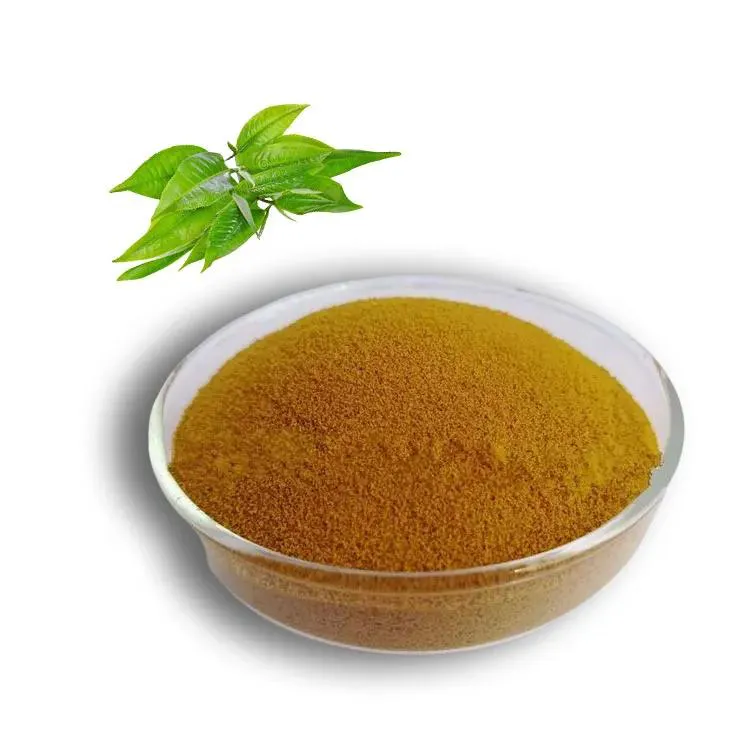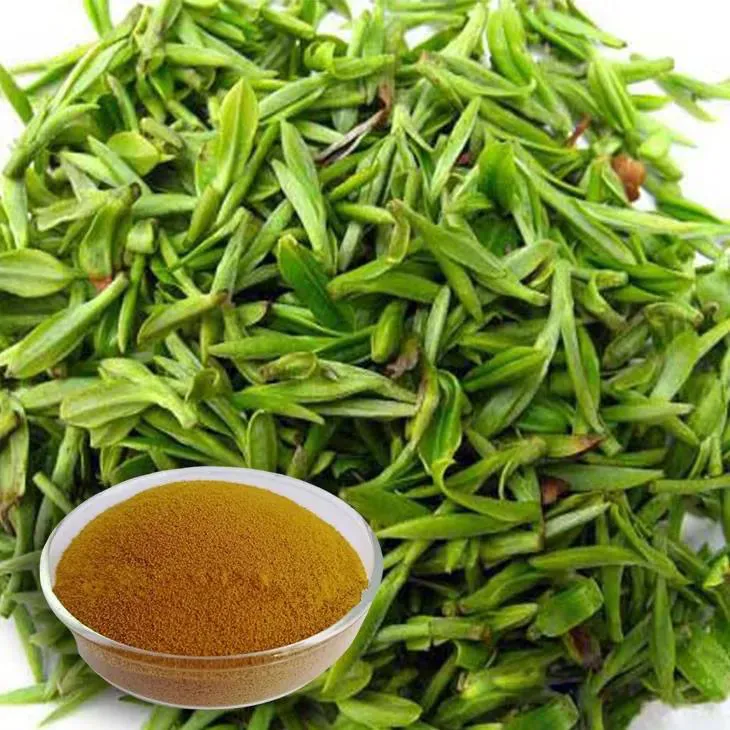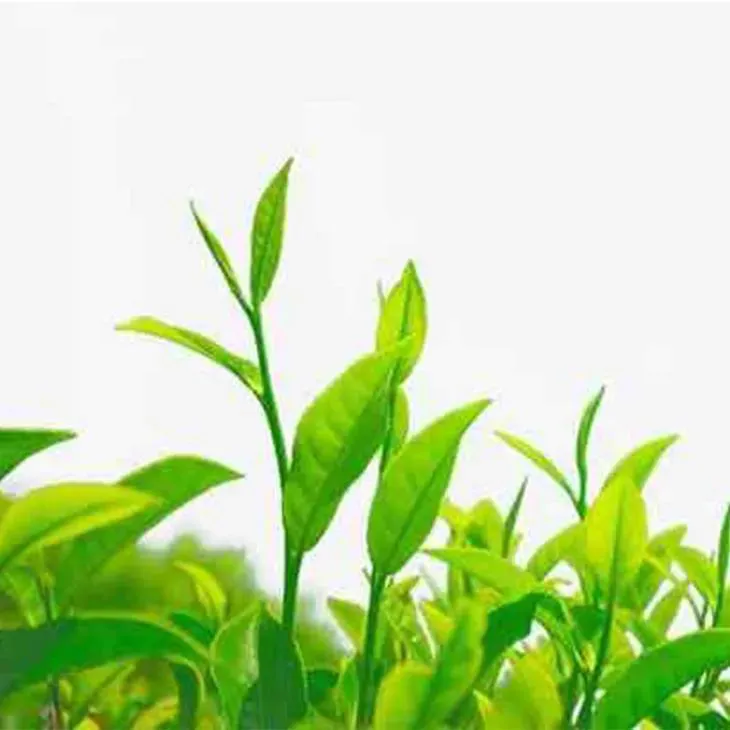- 0086-571-85302990
- sales@greenskybio.com
Standard - process green tea extract.
2024-11-30

Introduction
Standard - process Green Tea Extract has been attracting a great deal of attention in recent times. Green tea, when subjected to standard processing methods, results in an extract that is abundant in bioactive components. This natural extract has a wide range of potential applications and is being explored across various industries.

Bioactive Components
The main constituents of the standard - process Green Tea Extract are polyphenols, among which epigallocatechin gallate (EGCG) stands out. EGCG is recognized as one of the most powerful antioxidants in nature. Antioxidants play a crucial role in the body by neutralizing free radicals, which are unstable molecules that can cause damage to cells and contribute to various diseases.

Applications in the Pharmaceutical Realm
In the field of pharmaceuticals, the potential of standard - process Green Tea Extract is being actively investigated.
Chronic Disease Prevention
Research has indicated that this extract may have preventive effects against chronic diseases. For instance:
- It has the potential to regulate blood pressure. High blood pressure is a major risk factor for numerous health problems, including heart disease and stroke. The compounds in green tea extract may interact with the body's systems to help maintain blood pressure within a healthy range.
- It can also influence cholesterol levels. By affecting the metabolism of cholesterol, it may contribute to reducing the levels of "bad" cholesterol (LDL) and increasing the levels of "good" cholesterol (HDL), thereby decreasing the risk of cardiovascular problems.

Applications in the Agricultural Area
The standard - process green tea extract has found a valuable application in agriculture as well.
Natural Pesticide
Due to its antimicrobial properties, green tea extract can be used as a natural pesticide. Traditional pesticides often have negative impacts on the environment and may pose risks to human health. Green tea extract, on the other hand, offers a more sustainable and environmentally friendly alternative.
- It can combat a variety of pests and diseases that affect crops. For example, it may inhibit the growth of fungi and bacteria that cause plant diseases, protecting the plants from infections.
- As a natural pesticide, it is less likely to leave harmful residues on crops, which is beneficial for consumers who are increasingly concerned about the safety of the food they consume.
The Manufacturing Process
To ensure the quality of the standard - process green tea extract, strict manufacturing standards are adhered to.
Raw Material Selection
The first step in the manufacturing process is the careful selection of raw materials. High - quality green tea leaves are chosen, usually from specific regions known for their tea production. The leaves are examined for factors such as freshness, variety, and absence of contaminants.
Extraction
Once the appropriate leaves are selected, the extraction process begins. This typically involves the use of solvents such as water or ethanol to extract the bioactive components from the leaves. The extraction conditions, including temperature, pressure, and extraction time, are carefully controlled to optimize the yield and quality of the extract.
Purification
After extraction, the resulting extract may contain impurities. Therefore, a purification step is necessary. This can involve techniques such as filtration, centrifugation, or chromatography to remove unwanted substances and obtain a pure extract.
Quality Control
Throughout the manufacturing process, strict quality control measures are implemented. This includes testing the extract for its content of bioactive components, such as polyphenols and EGCG, as well as ensuring that it meets safety and purity standards. Samples are regularly analyzed in a laboratory to monitor the quality of the extract at each stage of production.
Applications in the Nutraceutical Market
In the nutraceutical market, the standard - process green tea extract has become a highly sought - after ingredient.
Cognitive Function Enhancement
There is growing evidence that it has the potential to enhance cognitive function. It may act on the brain by improving blood flow, protecting neurons from damage, and influencing neurotransmitter levels. This makes it an attractive ingredient for products aimed at promoting mental clarity and preventing cognitive decline, especially in an aging population.
Overall Well - being Improvement
Additionally, it is believed to contribute to overall well - being. The antioxidants in the extract can help reduce oxidative stress in the body, which is associated with various health issues. By consuming products containing green tea extract, individuals may experience increased energy levels, improved digestion, and a general sense of better health.
Applications in the Sports Nutrition Industry
The sports nutrition industry has also recognized the value of standard - process green tea extract.
Muscle Recovery
After exercise, muscles often experience inflammation, which can slow down the recovery process. Green tea extract may assist in muscle recovery by reducing this inflammation. It contains compounds that can modulate the body's inflammatory response, allowing athletes and fitness enthusiasts to recover more quickly and get back to their training routines sooner.
Conclusion
In conclusion, the standard - process green tea extract is a remarkable substance with a wide range of potential applications. From its role in the pharmaceutical realm in preventing chronic diseases, to its use as a natural pesticide in agriculture, to its popularity in the nutraceutical and sports nutrition industries, it offers numerous benefits. The strict manufacturing processes ensure its purity and efficacy, making it a reliable and valuable ingredient for various products. As research continues to uncover more about its properties and potential applications, it is likely that the importance of standard - process green tea extract will only continue to grow.
FAQ:
What are the main bioactive components in standard - process green tea extract?
The main bioactive components in standard - process green tea extract are polyphenols, such as epigallocatechin gallate (EGCG), which is a very potent antioxidant.
How does standard - process green tea extract help in the pharmaceutical realm?
In the pharmaceutical realm, standard - process green tea extract may have preventive effects against chronic diseases. It can help regulate blood pressure and cholesterol levels, thus reducing the risk of cardiovascular problems.
Why can green tea extract be used as a natural pesticide in agriculture?
Green tea extract can be used as a natural pesticide in agriculture because of its antimicrobial properties.
What are the standards for the manufacturing process of green tea extract?
Strict standards are followed during the manufacturing process of green tea extract to ensure its purity and efficacy. However, specific details of these standards may vary depending on different regulatory requirements and production goals.
How does standard - process green tea extract contribute to the nutraceutical market?
In the nutraceutical market, standard - process green tea extract is a sought - after ingredient as it has the potential to enhance cognitive function and improve overall well - being.
Related literature
- The Bioactive Compounds in Green Tea Extract and Their Health Benefits"
- "Standardized Processing of Green Tea Extract: Quality Assurance and Efficacy"
- "Green Tea Extract in Pharmaceutical and Nutraceutical Applications"
- ▶ Hesperidin
- ▶ citrus bioflavonoids
- ▶ plant extract
- ▶ lycopene
- ▶ Diosmin
- ▶ Grape seed extract
- ▶ Sea buckthorn Juice Powder
- ▶ Beetroot powder
- ▶ Hops Extract
- ▶ Artichoke Extract
- ▶ Reishi mushroom extract
- ▶ Astaxanthin
- ▶ Green Tea Extract
- ▶ Curcumin Extract
- ▶ Horse Chestnut Extract
- ▶ Other Problems
- ▶ Boswellia Serrata Extract
- ▶ Resveratrol Extract
- ▶ Marigold Extract
- ▶ Grape Leaf Extract
- ▶ blog3
- ▶ blog4
-
Active components in dandelion leaf extract.
2024-11-30
-
Chinese Rose Hip Extract Factories.
2024-11-30
-
Supplier of Hedyotis diffusa extract.
2024-11-30
-
Standard - process stevia extract.
2024-11-30
-
The Best Apple Cider Vinegar Powder in 2024.
2024-11-30
-
The Maca Extract Brands Most Worth Buying.
2024-11-30
-
Chia Seed Powder
2024-11-30
-
Resveratrol extract
2024-11-30
-
Tinospora cordifolia extract
2024-11-30
-
Diosmin
2024-11-30
-
Withania Somnifera Extract
2024-11-30
-
Phellodendron Extract
2024-11-30
-
Rosemary extract
2024-11-30
-
Kelp Extract Powder
2024-11-30
-
Maitake Mushroom Extract
2024-11-30
-
Garcinia Cambogia Extract
2024-11-30





















